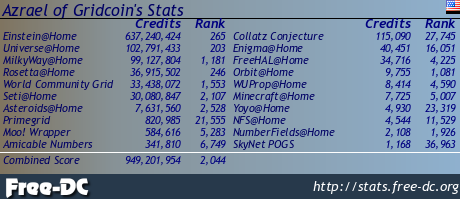
Cover of the April 1983 issue of Byte
There was no public Internet to speak of in 1983 so people had to look elsewhere to get info on the latest in computers. Fortunately, magazines like Byte did an excellent job. Their massive novel sized issues at this point in time meant it might take you until next months's issue to finish it. The April 1983 issue weighs in at nearly 550 pages and includes:
Features
- Build an RS-232C Breakout Box - Building an RS-232C Breakout box in order to diagnose communications issues. Includes schematics and parts list.
- The National Semiconductor NS16000 Microprocessor Family - This line of processors would be re-designated the NS32000 with the first version being the 16032/32016. This was an advanced (for the time) 32-bit CPU supporting virtual memory among other things. It was a competitor to Motorola's 68000. Unfortunately, early versions were very buggy. Later variants would be used in laser printers and fax machines.
- Design Philosophy Behind Motorola's MC68000, Part 1 - Part 1 of a detailed look at the design of Motorola's 68000 CPU. Eventually it would be used in tons of places including home computers like the Amiga and Atari ST.
- The CRT 907 Video Processor and Controller - A look at hardware designed to make terminals more flexible and to take more load of the display work off of the CPU.
- New Japanese Microcomputers - A look at some of the new 16-bit computers introduced at the Japan Data Show and Electronics Show. The first is the National Mybrain 300 from Matsushita featuring an 8088 CPU, at least 96K of RAM, and 3-inch, 5.25-inch and 8-inch floppy options and capable of running MS-DOS and CP/M-86. The second is the Mitsubishi Multi16 which is an all-in-one machine featuring 128K of RAM, 8088 CPU, 8087 math co-processor, one or two 300K 5.25-inch disk drives and running CP/M-86. The third is the Toshiba Pasopia 16 which also features an 8088 CPU, 192K of RAM and running MS-DOS. The next machine is the NEC PC-9800 which would become hugely popular in Japan. It features an 8086 CPU, 128K of RAM, built-in BASIC, support for MS-DOS and CP/M-86 and a variety of disk drive options. Others mentioned here include the Hitachi BASIC Master 16000, PT-1 Personal Terminal, Sord M-343 (including an 8086, 8087, and Z80A), AI Electronics AI-M16, Seiko 9500 and 8600, Sharp X1 (Z80 based), Sanyo MBC-55, National JR-200 and JR-100 (6802 CPU), Sord M5, Sanyo PHC-25, several portables and more.
- Intel's 80186: A 16-bit Computer on a Chip - The 80186 is faster than the 8086 but also incorporates functions previously relegated to the motherboard such as DMA, local bus controller, programmable interrupt controller, and more, replacing up to 20 other chips.
- The Intel 8087 Numerics Processor Extension - The 8087 is a math co-processor that added the ability to perform mathematical operations with an accuracy of 18-decimal digits. It could be added to many systems with 8086 or 8088 CPUs. This article goes into technical detail about this chip.
- Super Graphics Hardware from NEC - A detailed look at the NEC 7220 GDC, a display controller used in the Epson QX-10 and Corvus Concept.
- NAPLPS: A New Standard for Text and Graphics, Part 3: Advanced Features - Part three of a series on the North American Presentation-Level-Protocol Syntax, a communications standard for encoding text and graphics.
- Virtual Memory for Microcomputers - Virtual memory was a relatively new concept in personal computing. New memory management chips (MMUs) now made virtual memory a possibility. This article goes into detail on how virtual memory works.

Table of Contents from the April 1983 issue of Byte
Review
- Two Ways to Use CP/M-80 on the IBM PC - Reviews of the Baby Blue CPU from Xedex and the DS1 from Byad. These are both add-on boards for the IBM-PC that include a Z80 processor to allow running CP/M-80 on a PC.
Nucleus
- Editorial - Human engineered software and the creation of "easy-to-use" software.
- Letters - Letters from readers about new dynamic memory chips, Multidos for the TRS-80, radiation and video display terminals, JRT Pascal, and more.
- BYTELINES - Microsoft and Micropro rumored to be working on Visi On competitor; Apple commits to using Ethernet for the next year but will introduce its own LAN system in 1984; IBM sold 200,000 systems during its first year of selling the Personal Computer; IBM buys 12% stake in Intel; Commodore drops price of VIC-20; VIC-20 tops 1-million units in sales; and more.

Back cover of the April 1983 issue of Byte
Check out my other Social Media haunts (though most content is links to stuff I posted on Hive or reposts of stuff originally posted on Hive):
Wordpress: https://www.megalextoria.com/wordpress
Tumblr: https://www.tumblr.com/blog/darth-azrael
X: https://x.com/Darth_Azrael
Blogger: https://megalextoria.blogspot.com/
Odyssee: https://odysee.com/@Megalextoria:b
Rumble: https://rumble.com/c/c-2385054
Daily Motion: https://www.dailymotion.com/Megalextoria
Books I am reading or have recently read:
Total Power by Vince Flynn
Fallen Founder: The Life of Aaron Burr by Nancy Isenberg
Republic of Thieves by Scott Lynch
Mine Monero in your browser!
Earn Gridcoin while also helping various scientific projects by sharing your computer's idle CPU time!
